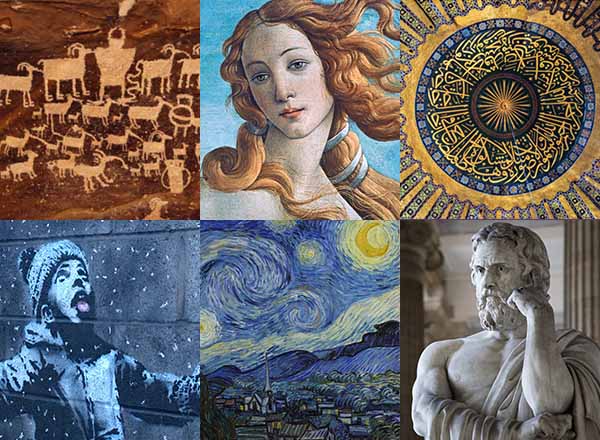Programs to Consider: Art History

This article is part of a series spotlighting HFC academic and workforce programs leading to great careers. To view all HFC programs, visit this link.
HFC offers the most comprehensive assortment of art history classes at any community college in Michigan.
The Art History program offers an experience to explore major historical and art works in architecture, sculpture, painting, and other visual arts. It also focuses on original archeological sites that include visits to museums – including the Detroit Institute of Arts – universities, and other cultural sites. Art History provides information on major cultures in our world, how they interact, and their impact through the production of visual art.
Study Abroad option
Those who wish to study abroad in Art History will need to travel to foreign countries as part of their education. Prior to leaving for destination, students must meet in classes on-campus to receive intensive instruction on the materials of the overseas visit. Specific travel information will be announced at least one semester prior to leaving for the study abroad component.
Classes to consider
Art History instructors use up-to-date textbooks with online digital and engaging learning experiences. Dr. Hashim Al-Tawil is the lead faculty.
Art History classes include:
- ART 121: Art History Survey I
- ART 122: Art History Survey II
- ART 123: History of Modern Art
- ART 130: History of Graphic Design
- ART 135: Art Appreciation
- ART 221: Medieval Art
- ART 224: Art of Islam
- ART 225: Asian Art: Art of India and Southeast Asia
- ART 226: African and Afro-American Art
- ART 227: History of Arab Art and Architecture
- ART 228: Arabic Calligraphy
- ART 229: Survey of Contemporary Art
- ART 290: Study Abroad in Art History
- ART 2901: Directed Study Art History
You may take classes twice for credit, but the subject matter must be different. The program's classes count as General Education Humanities classes toward the Michigan Transfer Agreement (MTA).
Here are the General Education Requirements for the Art History program.
Liberal Arts Pathways
HFC offers:
- Associate of Arts in Liberal Arts Pathway in Art History – Western Traditions
- Associate of Arts in Liberal Arts Pathway in Art History – Non-Western Traditions
- Associate of Arts in Liberal Arts Pathway in Art History – Middle Eastern Traditions
These classes fulfill requirements of certain programs, electives, or general education requirements. They are transferable to 4-year colleges and universities, as well as out-of-state educational institutions. You should select electives to reflect both your interests and the requirements of the intended transfer institute. We encourage you to consult with an Advisor or refer to the the transfer guide sheets in the Advising and Career Counseling Center.
After you complete coursework in the Liberal Arts Associate of Arts degree, you will be broadly educated in aspects of humanities, natural sciences, mathematics, social sciences, and fine arts. You should expect to have the ability to analyze problems, make value judgments, and express conclusions. You will devote a portion of your study to in-depth concentration of one subject.
We always recommend you talk to one of our friendly, expert advisors to make sure you are on the right track.
Program Outcomes
After you complete the Art History program, you should be able to:
- Transfer into a bachelor’s degree program through completion of the MTA.
- Civil Society and Culture: Compare and contrast the United States with other nations or regions, addressing social (economic, political and cultural) issues, patterns of diversity, or aspects of inequality.
- Communication: Effectively communicate ideas appropriate to your discipline using standard English, through written and verbal communication.
- Computer Technology: Demonstrate skills for computer technology, including internet, network, and file operations. Skills will include organizing, managing, and presenting data using productivity software. You will also identify security and integrity threats and identify unethical actions within your social or professional environments.
- Critical Thinking/Information Literacy: Demonstrate the ability to analyze and evaluate information and identify the need for research to draw conclusions, solve problems, and make decisions. You will also demonstrate information literacy skills by locating, evaluating, selecting, organizing, synthesizing, and ethically documenting information from multiple sources using both informal and formal formats.
- Quantitative Literacy: Apply quantitative skills to analyze situations and make decisions in a variety of contexts.
For questions or more information about the Art History program, contact Al-Tawil at 313-845-6489 or hal-tawil@hfcc.edu.